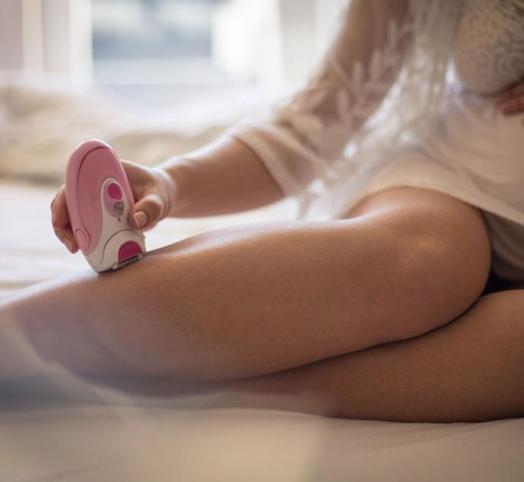What method of hair removal should you use during pregnancy?
Updated on March 2, 2023
Created on July 17, 2019
AU & NZ - Find your nearest pharmacy here
Updated on March 2, 2023
Created on July 17, 2019

What method of hair removal should you use during pregnancy?
Your skin is softer and more delicate...
During pregnancy, hormonal variations modify the skin’s balance, speed up dehydration, make it less resistant and more sensitive. As a result, it is easy to see how such an ordinary procedure as hair removal can become an aggressive action! Of course, while there’s no question of giving up hair removal until the baby arrives, some precautions are necessary before and afterwards.
moisturising daily is a must: nourishing and hydrating your skin twice a day is ESSENTIAL to preserve its ultra-sensitivity.
Cleansing gel just beforehand: healthy skin, free of impurities will be less prone to reactions.
Soothing hydrating balm straight afterwards: formulated specifically for use during pregnancy, it soothes sensations of tightness, while hydrating the skin deeply.
Precautions for each method
While it’s perfectly OK to continue to remove hair from your legs, underarms and bikini line taking precautions, you should never attempt to remove any fluffiness that has appeared on the brown line from the navel to the pubis, which will disappear after the birth.
Shaving: little risk provided you use clean blades so that no tiny cuts become infected. To make this procedure safe and not damage the epidermis, it is best always to use shaving foam, even if the razor has a bar of moisturising agents. Also, in the case of shaving, rapid re-growth means the procedure has to be repeated frequently.
Electric depilation appliance: this has the advantage of hair removal that lasts two to three weeks and therefore prevents repeated damage to the skin. The procedure can, however, be somewhat painful for the most sensitive and a source of irritation if the appliance is not properly cleaned systematically.
Waxing: this leaves the skin smooth for two to three weeks and is never entirely pain free. Depending how sensitive they are, each person must decide whether it is worth continuing with this method. In all cases, it is better to opt for cold wax strips: even if they need greater re-growth to be effective, they do not entail any risk of burning with hot wax, which is counter-indicated in the case of venous insufficiency.
Hair removal cream: this contains active ingredients that act deep in the skin and is therefore not indicated during pregnancy as the skin is naturally more sensitive.
Laser or pulsed light: as the rays go through the epidermis, they are only used before or after pregnancy.